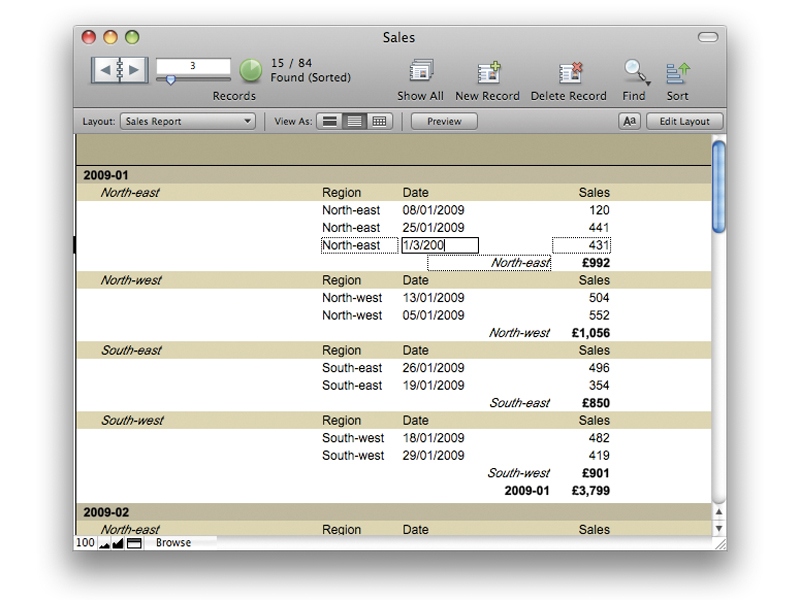TechRadar Verdict
Achieves a remarkable balance: easier to use after under-the-hood improvements and backwards compatibility.
Pros
- +
Script triggers
- +
Customisable toolbar
- +
Saved finds
- +
Built-in SMTP for sending email
- +
Import Excel 2008 & Bento
Cons
- -
Lacks platform-specific look and feel
Why you can trust TechRadar
Forget Gok Wan! FileMaker Pro 10 is sporting a glossy new look. This isn't just cosmetic surgery: real thought has gone into simplifying day to-day FileMaker use.
Initially, seasoned FileMaker users might miss the status area, but its customisable, iWork-like replacement, the Toolbar, should soon win them over. The controls themselves are more intuitive: in Browse mode, for example, you page left and right between records (rather than up and down).
You can jump to a particular record using the slider (with scrollwheel mouse support), and switching between the three different edit views – Form, List, and Table (similar to a spreadsheet) is a button click away.
In table view, the new Modify… button, lets you choose which fields to display – no need to add or delete fields in Layout mode.
Find what you need
New users often have trouble with FileMaker's Find mode, as it can be difficult to distinguish from the Browse (edit) mode. Well, not any more. In Find mode, all the fields clearly show a magnifying glass symbol. Tap in the details that match the records you want to look at and hit [Enter].
Having performed a find, you're only shown the records that match your criteria. The Toolbar shows the breakdown between this found set and the remaining, omitted records as a pie-chart; and clicking on the chart toggles between the two. If you often use the same find criteria, you can save your search criteria (and edit them) for later reuse.
Under the hood the improvements are more subtle, but more impressive. There are script triggers – scripts can now run not just via buttons, or menu items, but in response to a huge set of user actions (for example, if you click a tab, edit a field, exit a field, press a key, change a layout, or switch mode). This long-overdue killer feature will change the ways in which you can use FileMaker.
With careful scripting you can make it impossible to type more than say ten characters into a field; or properly capitalise postcodes as you enter them; or switch layouts automatically as you page between records. With a little thought you can foolproof the drudgery of your data-entry tasks, to suit your needs.
Dynamic subsummaries
If that sounds too much like programming, then how about a feature that requires no intervention? FileMaker now supports dynamic subsummaries. Previously, when you created reports in FileMaker, you would use the Preview mode to see your sales data grouped by months, and sub-totalled.
Subsummaries now work in Browse mode, so you can see your monthly totals as you work. Change a date on record and it's automatically re-grouped into the appropriate month.
To FileMaker veterans it will look like magic! More importantly, this means that when you sort a list of records, it stays sorted, even after editing the data. FileMaker 10 now supports scripted printer selection on the Mac, so you can write scripts to send a fax, or your thermal label printer to print labels without complicated user intervention.
FileMaker also imports data (but not layouts or design) from Bento, so you can get your Address Book and iCal data into FileMaker (albeit via Bento). It's dropped format support for SYLK, DBF, DIF, WKS, and BASIC, but will handle the new .xslx format used by Excel 2008. The Introduction Dialog even lets you create a database from a text file or Excel directly.
The starter solutions have been revamped, and new layout themes have been added.
Finally, FileMaker 10 includes its own email functionality. Version 9 sent email via your email client (Mail or Entourage), but now support for SMTP is built into the application itself, so you can send mail directly.
